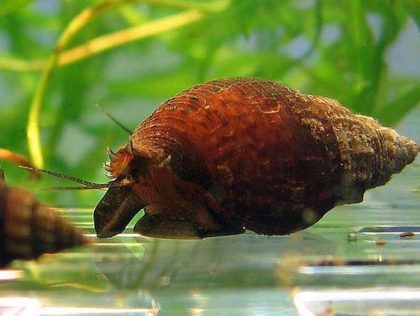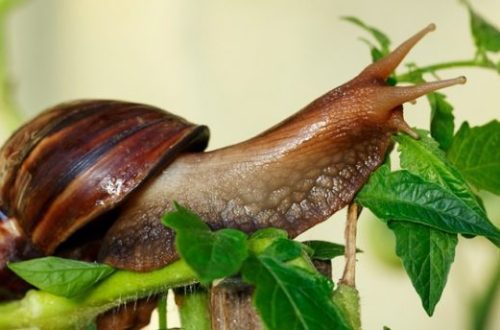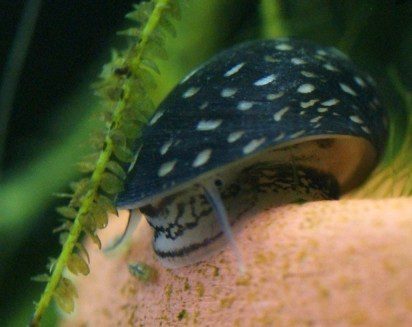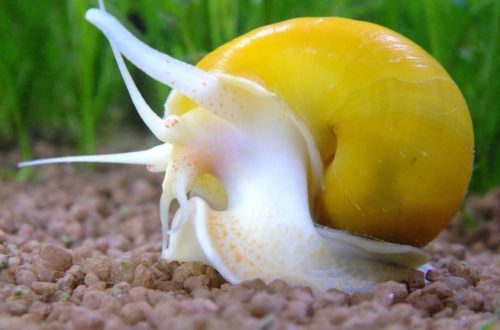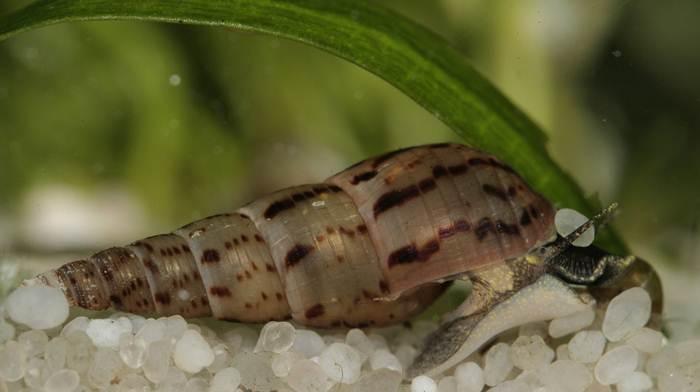
Melania: maintenance, breeding, compatibility, photo, description

Contents
Origin and appearance
Melania is a gastropod mollusk of the genus Melanoides of the family Thiaridae. The obsolete name of the species is tiara, as it is mentioned in the aquarium literature of past years. Today, this name is outdated and incorrect, because, due to new scientific research, the place of melania in the classification of molluscs has changed. In everyday life, these snails are also called ground snails.
Adult snails do not grow more than 3 cm. Young individuals are so small that they cannot be seen without a magnifying glass. This species is easily distinguished by a sharp shell, which has the shape of a narrow, elongated cone (this shape is most convenient for digging into the ground). The colors are discreet, varying from dark grayish to yellowish green with darker longitudinal uneven stripes.
Today, a slightly larger and more attractive appearance of these mollusks, Melanoides granifera, has appeared in the aquarium. The granifera shell is more domed and painted in brown tones. For other characteristics, it is exactly the same soil snail.
The distribution area of mollusks in nature is very wide: they live in Asia, Africa, and Australia. Melania populations have recently been discovered in the southern United States and Europe.
Varieties of Melanoides
In many aquarium publications, you can read that melanias are of the same species – Melanoides tuberculata, the size of the shell reaches 3-3,5 cm in length. In fact, there are at least two more types of melania snails:
- Melanoides granifera is native to Malaysia;
- Melanoides riqueti from Singapore ponds.

All three varieties of this freshwater mollusk known today are endowed with a conical shell, the mouth of which is easily covered with a lime door at a critical moment.
Thanks to this, a microclimate favorable for the snail is preserved inside the shell, although it should be noted that melania is very hardy – they do not care about critical water temperatures or its high salinity.
External differences are more pronounced in Melanoides tuberculata and Melanoides granifera. This mainly concerns their color:
Melanoides tuberculata gray color, combined with olive and green. In contrast to the entire shell of the mollusk, its mouth looks, the spirals of which are more saturated in color – they can have brown, sometimes even burgundy shades.
Melanoides granifera surpass their species counterparts in external attractiveness. Shades of gray and brown contrasting in a peculiar combination distinguish them favorably from other varieties.
Basic conditions of detention
- Temperature parameters 22ºС – 28ºС. Regarding the hardness and parameters of the acid, you don’t have to worry at all, since snails don’t react to these indicators at all. These picky aquarium individuals can also live in salted water, the only thing that mollusks do not like is very cold water.
- But you should think about aeration, since this aquarium variety of mollusks breathes with gills.
- But the most mandatory in the maintenance of these individuals is high-quality soil. The ideal option is a sandy bottom or fine gravel soil. However, it is worth noting that snails can live for a long time without soil.
- Decorating their water space, melania do not attach importance, but they like to hide not only in the ground, but also under stones or decorative grottoes. And any vegetation will serve not only as a place to hide, but also as a good way for frequent snacks.
How to keep aquarium melania?
It seems that no one cares about creating special conditions for snails to live in domestic water bodies.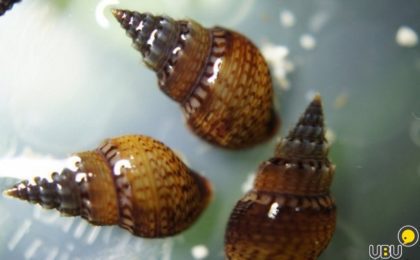 thinks about it. Moreover, this mollusk is very unpretentious and easily adapts to a variety of circumstances.
thinks about it. Moreover, this mollusk is very unpretentious and easily adapts to a variety of circumstances.
For example, being a native of freshwater reservoirs, Melanoides tuberculata demonstrates a wide tolerance to the level of water salinity – there are cases of melania living in lakes with a salinity of up to 30%.
In the conditions of a home aquarium, the snail calmly refers to any temperature regime, however, the optimal range for it is 20-28 ° C.
Even less significant for this representative of the gastropods are such water parameters as acidity and hardness.
But the soil for melania is an indispensable element. Its quality is also very important. It should be either coarse sand, or soil with a grain size of 3-4 mm (snails should be able to move easily, and such soil remains clean longer).
To ensure the reproduction of molluscs, a pair is needed – a male and a female. Melania is heterogeneous.
The young generation of snails does not grow up soon, adding 5-6 mm in length every month.
Based on the above, it can be seen that Melanoides tuberculata is more of a useful inhabitant of a domestic reservoir. And these qualities of a mollusk suit you and whether it is worth letting it into the aquarium is up to you.
Melania features
The mollusk Melanoides tuberculata is an unusual representative of the gastropods, it differs from other similar inhabitants of the aquarium in several ways at once.
First. Melanoides tuberculata is known as the ground snail, because its habitat in an artificial reservoir is aquarium soil. It happens that melania crawls onto the walls of a home pond or decor items, but this is not widespread. Some individuals usually undertake such sorties at night.
Second. Melania is important for the presence of dissolved oxygen in the water, since it breathes with the help of gills.
The third. Melanoides tuberculata is a viviparous snail that does not spawn, but produces completely independent offspring.
Feeding
To create ideal living conditions for mollusks, you should not worry about special food for them, since snails eat absolutely everything. They will not disdain small leftovers inherited from other aquarium inhabitants, and will gladly eat soft algae, thereby not only having a light snack, but also keeping the pond clean.
But if you want to feed your pets, as soon as they throw water in a special tablet, which is used for catfish. You can also give balanced vegetables, such as cabbage, zucchini or cucumber.
Breeding
To breed snails, you do not need to seat them in a separate aquarium or create special conditions. Since the aquarium mollusk reproduces at lightning speed. To do this, it is enough to settle several individuals of this species in a reservoir, so that after a couple of months the number of individuals will increase several tens of times.
It should be recalled that the snail refers to viviparous individuals that bear an egg, and after a while small individuals of this species appear from it. The number of small melanias depends primarily on the size of the snail itself, and can range from about 10 to 50 pieces.
How to get rid
In the event that the mollusks have completely filled the entire aquarium and are rather tired of their owner, you can get rid of them using a few simple methods. First of all, it should be remembered that snails absorb oxygen, and without it, they begin to develop poorly and die after a while.
But this method can kill other inhabitants of the aquarium. Therefore, you can use another method by throwing some vegetables into the pond at night. The very next morning, the whole zucchini will be in melania. You can also use special preparations that are served at the pet store.
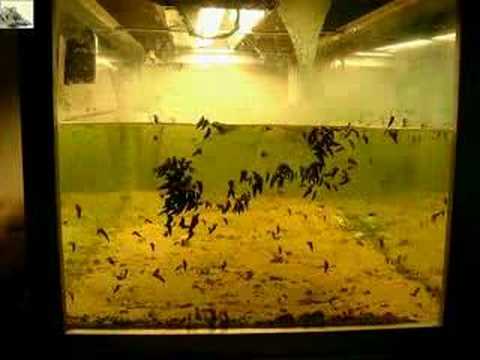

Watch this video on YouTube





